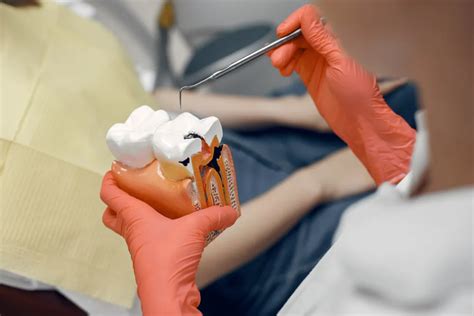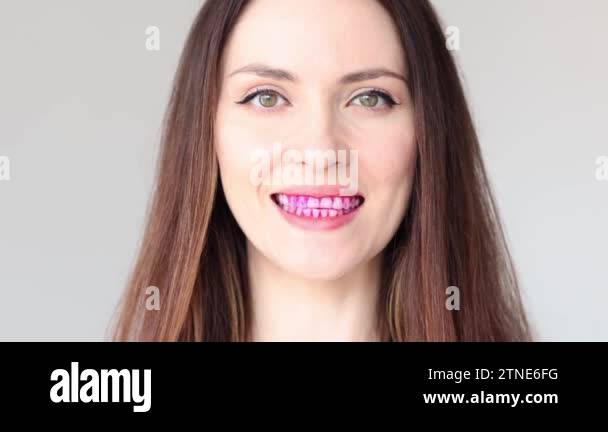Biofilm In Mouth: Removal Guide
The human mouth is a complex ecosystem, home to trillions of microorganisms that can have both beneficial and harmful effects on our oral health. One of the most significant threats to oral health is the formation of biofilm in the mouth. Biofilm is a complex community of microorganisms that adhere to surfaces, including teeth, gums, and other oral tissues. In this comprehensive guide, we will explore the world of biofilm in the mouth, its causes, consequences, and most importantly, how to remove it.
Understanding Biofilm Formation
Biofilm formation is a natural process that occurs when microorganisms in the mouth adhere to surfaces and start to multiply. This process is facilitated by the presence of saliva, which contains nutrients and other substances that promote microbial growth. As the microorganisms multiply, they produce a protective matrix of polysaccharides and proteins that shields them from the immune system and antimicrobial agents. This matrix, known as the biofilm matrix, is incredibly resilient and can resist even the most aggressive cleaning methods.
Causes of Biofilm Formation
Several factors contribute to the formation of biofilm in the mouth. Poor oral hygiene is a significant risk factor, as it allows microorganisms to accumulate and multiply on surfaces. Other factors include:
- Poor diet: Consuming high amounts of sugar and carbohydrates can promote the growth of acid-producing bacteria, which can lead to biofilm formation.
- Dry mouth: Saliva helps to wash away microorganisms and neutralize acids. A dry mouth can create an environment conducive to biofilm formation.
- Gum disease: Gingivitis and periodontitis can create an environment that promotes biofilm formation.
- Tobacco use: Tobacco use can reduce saliva production and alter the oral microbiome, promoting biofilm formation.
Consequences of Biofilm Formation
Biofilm formation can have severe consequences for oral health. Some of the most significant consequences include:
- Tooth decay: Biofilm can produce acids that demineralize tooth enamel, leading to cavities and tooth decay.
- Gum disease: Biofilm can trigger an inflammatory response in the gums, leading to gingivitis and periodontitis.
- Bad breath: Biofilm can produce volatile sulfur compounds that cause bad breath.
- Systemic diseases: Research suggests that oral biofilm may be linked to systemic diseases such as heart disease, diabetes, and respiratory infections.
Removing Biofilm from the Mouth
Removing biofilm from the mouth requires a comprehensive approach that involves both professional and at-home cleaning methods. Here are some effective methods for removing biofilm:
Professional Cleaning Methods
- Dental prophylaxis: Regular dental cleanings can help remove biofilm and prevent its formation.
- Scaling and root planing: This deep cleaning method can help remove biofilm from below the gum line.
- Laser therapy: Laser therapy can help kill microorganisms and remove biofilm.
At-Home Cleaning Methods
- Brushing: Brushing teeth at least twice a day with a fluoride toothpaste can help remove biofilm.
- Flossing: Flossing once a day can help remove biofilm from between teeth and below the gum line.
- Mouthwash: Using an antibacterial mouthwash can help kill microorganisms and remove biofilm.
- Tongue scraping: Scraping the tongue can help remove biofilm and bacteria that can cause bad breath.
Advanced Biofilm Removal Techniques
In addition to professional and at-home cleaning methods, there are several advanced techniques that can help remove biofilm from the mouth. These include:
- Oil pulling: Oil pulling involves swishing oil around the mouth to remove biofilm and bacteria.
- Waterpik: Using a waterpik can help remove biofilm from between teeth and below the gum line.
- Desensitizing toothpaste: Using a desensitizing toothpaste can help remove biofilm and reduce sensitivity.
Conclusion
Biofilm formation is a significant threat to oral health, but it can be removed with a comprehensive approach that involves both professional and at-home cleaning methods. By understanding the causes and consequences of biofilm formation, individuals can take proactive steps to prevent its formation and maintain good oral health. Remember, a healthy mouth is the gateway to a healthy body.
What is the best way to remove biofilm from the mouth?
+The best way to remove biofilm from the mouth is through a combination of professional and at-home cleaning methods. This includes regular dental cleanings, brushing, flossing, and using an antibacterial mouthwash.
Can biofilm formation be prevented?
+Yes, biofilm formation can be prevented by maintaining good oral hygiene, eating a healthy diet, and avoiding tobacco use. Regular dental cleanings and check-ups can also help prevent biofilm formation.
What are the consequences of not removing biofilm from the mouth?
+The consequences of not removing biofilm from the mouth can be severe and include tooth decay, gum disease, bad breath, and systemic diseases such as heart disease and diabetes.
In conclusion, removing biofilm from the mouth requires a comprehensive approach that involves both professional and at-home cleaning methods. By understanding the causes and consequences of biofilm formation, individuals can take proactive steps to prevent its formation and maintain good oral health. Remember, a healthy mouth is the gateway to a healthy body.
Also, for more information you can seek a doctor’s appointment to make sure your mouth is free of biofilm to keep good oral health.


